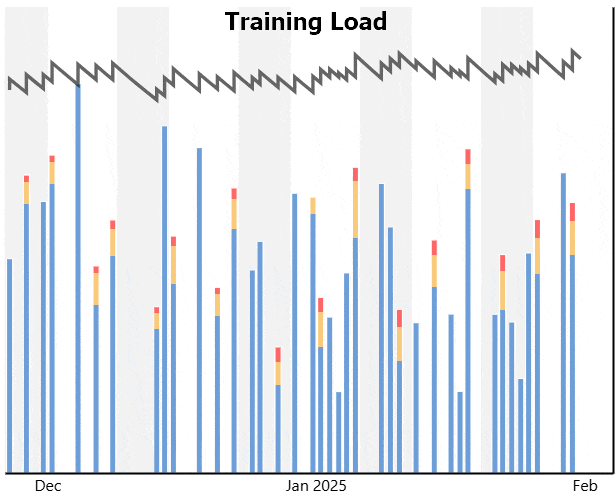That looks like a reasonable goal to start with.
Based on the steady TL increase between now and your target date you will likely reach or exceed your target power increase along the way.
A quick way to determine that is midway through toss in a fitness test workout from the Library on a HIT day preferably when you are feeling especially fresh.
It’s also possible to come up with a viable forecast plan when you push Achievability into the red text level. You won’t know until you try it. It may say something along the lines of – doable but no wiggle room.
The crucial element to a viable forecast is estimated changes in Signature (TP-HIE-PP) and TL (Low-High-Peak) values over the course of the plan.
You can see this visually by viewing the forecast chart and isolate each key value one at a time.
Here’s an example 60 day goal where Low strain remains steady but notice the increases in High and Peak XSS.

This also happens to be an example where 5 weeks in I exceeded my target goal by a couple watts. ![]()